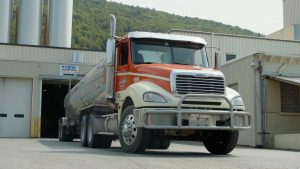
244 dairy workers across 22 dairy farms in Northern New York have participated in this research since its inception in 2019. The NNYADP “E-Learning Training Systems as an Educational Approach for Dairy Workers” project reports for Phase I, II and III are posted at www.nnyagdev.org.
“The design, development, and on-farm testing of this web-based training system for dairy employees have produced objective data that demonstrates that the participating employees have comprehended the information presented and accordingly changed how they perform in the milking parlor and follow cow care procedures that help to ensure animal health and milk quality,” said project leader Paul D. Virkler, D.V.M., a veterinarian with Cornell Quality Milk Production Services, Canton, New York.
Focused on the most critical risk factors for mastitis, Virkler and his team created e-learning training modules addressing the highest priority areas related to milking parlor responsibilities, milking equipment operations, and dairy cow health.
In Phase III in 2021 participating dairy workers were assessed pre-training to identify their level of knowledge of how to properly perform the dry-off procedure as the cow transitions to not being milked for two months prior to having her calf. Virkler noted, “The pre-training assessment of dairy worker knowledge that provided a starting point for our module development also provides a guide for other dairy farms considering ways to improve their dry-off procedure.”
Phase III module sections address tasks such as administering teat sealants, collecting aseptic milk samples, intrammammary treatment, and determining saleable milk.
The NNYADP Phase III dairy e-learning project report is believed to be the first publication showing a pre-training quantification of educational need by dairy workers as related to the dry-off procedure.
Phase I of the project identified literacy and language barriers. Year two brought to light the challenge of workers lacking any experience with milking cows upon arrival at farms. Virkler’s team added bilingual read-aloud audio options in Phase II and asked farms to provide one hour of paid training time, both of which greatly improved worker completion rates to 100 percent in year two. Completion rate in year one was six percent.
The Phase III component on proper collection of aseptic milk samples for culturing dovetails with earlier NNYADP research and QMPS objectives related to more precisely targeting treatment for clinical mastitis to a specific cause to reduce unwarranted antibiotic use. 83 percent of the 60 participating workers in the Phase III training evaluation showed post-training improvement.
“This new e-learning training system can serve as a foundational tool to help dairy farms improve their operations and provide an alternative to face-to-face training. We hope the creation of this new way of training dairy workers will encourage farms to make it part of a broad, ongoing, on-farm educational culture for workers,” Virkler said.
Going forward, the Phase I and Phase II modules will be migrated to the Phase III platform that proved to be more user-friendly, allowing easier access for farms to all three modules.
Funding for the Northern New York Agricultural Development Program is supported by the New York State Legislature and administered by the New York State Department of Agriculture and Markets.























